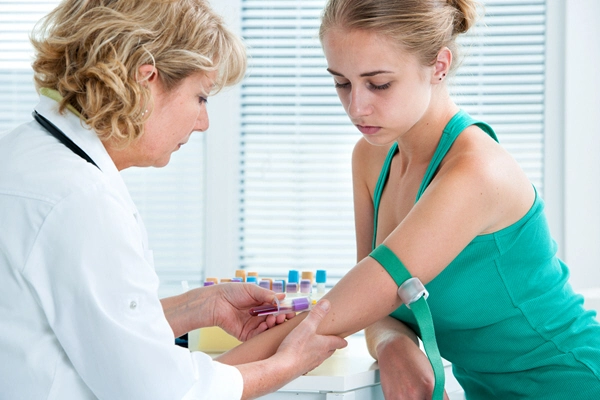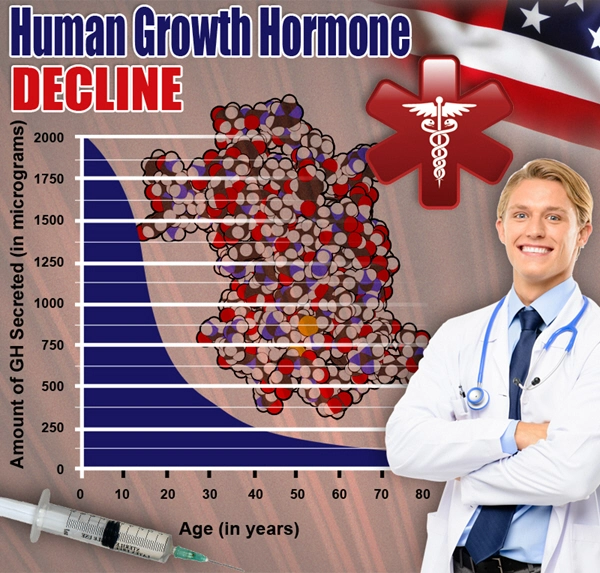Introduction
Penile size is a topic of significant interest and concern among American males, often influenced by societal expectations and personal self-esteem. While numerous factors, including age, hormonal changes, and lifestyle, can affect penile size, recent research has begun to explore the role of genetic predisposition in penile shrinkage. This article delves into the familial patterns and genetic markers associated with penile size among American males, providing a comprehensive analysis of how genetics may influence this aspect of male health.
Familial Patterns in Penile Size
Research has indicated that penile size may be influenced by familial patterns, suggesting a genetic component to this trait. Studies examining father-son correlations have found that sons tend to have penile sizes similar to their fathers, pointing to a hereditary factor. A study published in the *Journal of Urology* found that sons of fathers with smaller penile sizes were more likely to have smaller penile sizes themselves, indicating a possible genetic link.
This familial pattern is further supported by twin studies, which have shown higher concordance rates for penile size among monozygotic twins compared to dizygotic twins. These findings suggest that genetic factors play a significant role in determining penile size, and that these traits can be passed down through generations.
Genetic Markers Associated with Penile Size
Identifying specific genetic markers associated with penile size is an emerging area of research. Recent studies have begun to pinpoint certain genes that may influence penile development and size. For instance, the gene *SRD5A2*, which encodes the enzyme 5-alpha reductase, has been linked to penile size. Mutations in this gene can lead to conditions such as 5-alpha reductase deficiency, which can result in underdeveloped genitalia.
Another gene of interest is *AR*, which codes for the androgen receptor. Androgens, such as testosterone, play a crucial role in penile development, and variations in the *AR* gene can affect how effectively these hormones stimulate penile growth. Research has shown that certain polymorphisms in the *AR* gene are associated with smaller penile sizes in American males.
The Role of Epigenetics
Beyond direct genetic markers, epigenetics—the study of changes in gene expression without alterations to the underlying DNA sequence—may also play a role in penile size. Environmental factors, such as diet and exposure to certain chemicals, can influence epigenetic modifications that affect gene expression related to penile development. For example, exposure to endocrine-disrupting chemicals during critical developmental periods can lead to epigenetic changes that result in smaller penile sizes.
Understanding these epigenetic influences is crucial, as they can provide insights into how environmental factors interact with genetic predispositions to affect penile size. This knowledge can guide preventive measures and interventions aimed at mitigating the impact of these factors on penile development.
Clinical Implications and Future Directions
The identification of genetic and familial factors associated with penile size has significant clinical implications. For American males concerned about penile size, understanding their genetic predisposition can provide a more comprehensive view of their situation. Genetic counseling may become an important tool in addressing concerns related to penile size, offering personalized insights based on an individual's genetic profile.
Future research should focus on expanding our understanding of the genetic markers and epigenetic factors that influence penile size. Large-scale genome-wide association studies (GWAS) could help identify additional genes and pathways involved in penile development. Moreover, longitudinal studies tracking penile size across generations within families could provide further evidence of the genetic basis of this trait.
Conclusion
The role of genetic predisposition in penile shrinkage among American males is a complex and multifaceted issue. Familial patterns and specific genetic markers, such as *SRD5A2* and *AR*, have been identified as key factors influencing penile size. Additionally, epigenetic modifications influenced by environmental factors may also play a role. As research in this field continues to evolve, it holds the promise of offering more personalized approaches to addressing concerns related to penile size among American males. By understanding the genetic and familial underpinnings of penile size, healthcare providers can better support their patients in navigating these sensitive health issues.

- Unveiling the Enigma of Penile Reduction: Debunking Myths and Facing Realities [Last Updated On: February 25th, 2025] [Originally Added On: February 25th, 2025]
- Deciphering the Science of Diminished Male Endowment: An Insight into Penis Shrinkage and Precipitating Factors [Last Updated On: February 26th, 2025] [Originally Added On: February 26th, 2025]
- Understanding the Journey of Manhood: Changes in Penis Size as We Age [Last Updated On: February 27th, 2025] [Originally Added On: February 27th, 2025]
- Decoding the Enigma: Hormones, Health, and Male Genital Diminution [Last Updated On: February 28th, 2025] [Originally Added On: February 28th, 2025]
- Investigating the Correlation: Body Weight, Dietary Habits, and Masculinity [Last Updated On: March 1st, 2025] [Originally Added On: February 28th, 2025]
- Embracing Silent Stories: Unveiling the Truth About Penile Shrinkage [Last Updated On: March 1st, 2025] [Originally Added On: March 1st, 2025]
- Unraveling the Mystery: Genetics, Lifestyle, and the Phenomenon of Penis Shrinkage in American Males [Last Updated On: March 2nd, 2025] [Originally Added On: March 2nd, 2025]
- Exploring the Multifaceted Role of Testosterone in Muscle Growth, Bone Density, and Physical Development [Last Updated On: March 3rd, 2025] [Originally Added On: March 3rd, 2025]
- Understanding Penile Changes After Prostate Surgery: Outcomes and Management [Last Updated On: March 4th, 2025] [Originally Added On: March 4th, 2025]
- Exploring Exercise's Role in Enhancing Male Sexual Health and Erectile Function [Last Updated On: March 5th, 2025] [Originally Added On: March 5th, 2025]
- Understanding Blood Flow's Impact on Penile Health and Erectile Function [Last Updated On: March 6th, 2025] [Originally Added On: March 6th, 2025]
- Optimizing Male Sexual Health: Lifestyle Impacts of Smoking and Alcohol on Erectile Function [Last Updated On: March 7th, 2025] [Originally Added On: March 7th, 2025]
- Understanding Andropause: The Male Menopause and Its Effects on Penile Health [Last Updated On: March 7th, 2025] [Originally Added On: March 7th, 2025]
- Penile Atrophy in American Males: Causes, Signs, and Management Strategies [Last Updated On: March 8th, 2025] [Originally Added On: March 8th, 2025]
- Demystifying Penis Shrinkage: Causes, Myths, and Health Implications Explained Professionally [Last Updated On: March 8th, 2025] [Originally Added On: March 8th, 2025]
- The Interplay of Chronic Diseases on Male Genital Health: Implications and Management Strategies [Last Updated On: March 9th, 2025] [Originally Added On: March 9th, 2025]
- The Metabolic Link Between Diabetes and Reduced Organ Size in American Males [Last Updated On: March 14th, 2025] [Originally Added On: March 12th, 2025]
- The Impact of Environmental Toxins on Male Reproductive Health: A Focus on Penile Size [Last Updated On: March 13th, 2025] [Originally Added On: March 13th, 2025]
- Understanding Global Variations in Penile Dimensions: A Comprehensive Overview [Last Updated On: March 15th, 2025] [Originally Added On: March 15th, 2025]
- Inflammation, Oxidative Stress, and Penile Shrinkage: A Comprehensive Guide for American Males [Last Updated On: March 16th, 2025] [Originally Added On: March 16th, 2025]
- Natural Remedies for Penis Shrinkage: Herbs, Supplements, and Lifestyle for American Males [Last Updated On: March 19th, 2025] [Originally Added On: March 19th, 2025]
- Understanding Penile Aging: Shrinkage, Health, and Interventions in American Men [Last Updated On: March 19th, 2025] [Originally Added On: March 19th, 2025]
- Weight Loss and Penis Size: Reversing Shrinkage and Enhancing Men's Health [Last Updated On: March 19th, 2025] [Originally Added On: March 19th, 2025]
- Obesity's Impact on Male Genital Health: Understanding Penis Shrinkage [Last Updated On: March 20th, 2025] [Originally Added On: March 20th, 2025]
- Nutritional Strategies to Combat Penis Shrinkage in American Males [Last Updated On: March 20th, 2025] [Originally Added On: March 20th, 2025]
- High Blood Pressure's Impact on Penile Health and Size: Understanding Shrinkage [Last Updated On: March 20th, 2025] [Originally Added On: March 20th, 2025]
- Hormonal Imbalances and Their Impact on Penis Size in American Males [Last Updated On: March 20th, 2025] [Originally Added On: March 20th, 2025]
- Peyronie's Disease: Understanding Penis Shrinkage and Treatment Options [Last Updated On: March 21st, 2025] [Originally Added On: March 21st, 2025]
- Sedentary Lifestyles and Penis Shrinkage: Impacts and Mitigation Strategies for American Males [Last Updated On: March 21st, 2025] [Originally Added On: March 21st, 2025]
- Prostate Health and Penis Size: Understanding Impacts and Managing Shrinkage [Last Updated On: March 21st, 2025] [Originally Added On: March 21st, 2025]
- Penile Size Measurement and Shrinkage: Causes, Impacts, and Treatments for American Males [Last Updated On: March 22nd, 2025] [Originally Added On: March 22nd, 2025]
- Penile Measurement Techniques and Understanding Shrinkage in American Males [Last Updated On: March 22nd, 2025] [Originally Added On: March 22nd, 2025]
- Boost Testosterone Naturally: Diet, Exercise to Counter Penis Shrinkage in American Males [Last Updated On: March 23rd, 2025] [Originally Added On: March 23rd, 2025]
- Chronic Illness and Penis Shrinkage: Causes, Impacts, and Management Strategies [Last Updated On: March 23rd, 2025] [Originally Added On: March 23rd, 2025]
- Penile Shrinkage: When to Consult a Urologist for Size Changes [Last Updated On: March 23rd, 2025] [Originally Added On: March 23rd, 2025]
- Medications Linked to Penile Shrinkage: Mechanisms, Implications, and Management Strategies [Last Updated On: March 24th, 2025] [Originally Added On: March 24th, 2025]
- Understanding and Preventing Penile Shrinkage: A Comprehensive Guide for Men [Last Updated On: March 24th, 2025] [Originally Added On: March 24th, 2025]
- Anti-Inflammatory Diets: A Promising Approach to Preventing Penis Shrinkage in American Males [Last Updated On: March 24th, 2025] [Originally Added On: March 24th, 2025]
- HRT: A Promising Solution for Penis Shrinkage in American Males [Last Updated On: March 24th, 2025] [Originally Added On: March 24th, 2025]
- Chronic Stress and Cortisol: Impacts on Penile Health and Size in American Men [Last Updated On: March 24th, 2025] [Originally Added On: March 24th, 2025]
- Genetic Factors Influencing Penis Size and Shrinkage: A Comprehensive Overview [Last Updated On: March 24th, 2025] [Originally Added On: March 24th, 2025]
- Penis Shrinkage and ED: Causes, Treatments, and Importance of Medical Advice [Last Updated On: March 25th, 2025] [Originally Added On: March 25th, 2025]
- Sleep Disorders and Male Sexual Health: Understanding Penis Shrinkage Concerns [Last Updated On: March 25th, 2025] [Originally Added On: March 25th, 2025]
- Environmental Pollutants and Penis Shrinkage: Impacts on Male Reproductive Health [Last Updated On: March 25th, 2025] [Originally Added On: March 25th, 2025]
- Understanding Penile Atrophy: Causes, Symptoms, and Importance of Urological Exams [Last Updated On: March 25th, 2025] [Originally Added On: March 25th, 2025]
- Metabolic Syndrome and Penis Shrinkage: Causes, Impacts, and Management Strategies [Last Updated On: March 25th, 2025] [Originally Added On: March 25th, 2025]
- Preventing Penis Shrinkage: Diet, Exercise, and Lifestyle Tips for American Males [Last Updated On: March 25th, 2025] [Originally Added On: March 25th, 2025]
- Smoking Cessation and Penile Health: Reversing Shrinkage in American Males [Last Updated On: March 25th, 2025] [Originally Added On: March 25th, 2025]
- Emerging Therapies for Penile Shrinkage: Hope for American Men's Sexual Health [Last Updated On: March 25th, 2025] [Originally Added On: March 25th, 2025]
- Managing Perceived Penis Shrinkage: Effective Psychological Strategies for Men [Last Updated On: March 26th, 2025] [Originally Added On: March 26th, 2025]
- Inflammation's Impact on Penis Size: Cellular, Vascular, and Hormonal Factors [Last Updated On: March 26th, 2025] [Originally Added On: March 26th, 2025]
- Understanding Penis Shrinkage in Aging Men: Causes, Impacts, and Management Strategies [Last Updated On: March 26th, 2025] [Originally Added On: March 26th, 2025]
- Vascular Surgery: A Promising Solution for Penis Shrinkage and Penile Health [Last Updated On: March 26th, 2025] [Originally Added On: March 26th, 2025]
- Alcohol's Impact on Penile Health: Moderation and Lifestyle Choices [Last Updated On: March 26th, 2025] [Originally Added On: March 26th, 2025]
- Preventing Penile Shrinkage: Enhancing Vascular Health in American Males [Last Updated On: March 27th, 2025] [Originally Added On: March 27th, 2025]
- American Men's Journeys with Penile Atrophy: Challenges and Medical Interventions [Last Updated On: March 27th, 2025] [Originally Added On: March 27th, 2025]
- Relationship Dynamics and Perceived Penis Shrinkage: Strategies for Enhancing Male Self-Esteem [Last Updated On: March 27th, 2025] [Originally Added On: March 27th, 2025]
- Penile Atrophy: Causes, Effects, and Treatment Options for American Males [Last Updated On: March 27th, 2025] [Originally Added On: March 27th, 2025]
- Cardiovascular Fitness: Key to Enhancing Penile Health and Preventing Shrinkage [Last Updated On: March 27th, 2025] [Originally Added On: March 27th, 2025]
- Penile Atrophy: Understanding Causes, Treatments, and Breaking the Stigma [Last Updated On: March 27th, 2025] [Originally Added On: March 27th, 2025]
- Androgens and Penile Health: Understanding Shrinkage and Holistic Management Strategies [Last Updated On: March 27th, 2025] [Originally Added On: March 27th, 2025]
- Meditation and Stress Reduction: Keys to Preventing Penis Shrinkage [Last Updated On: March 27th, 2025] [Originally Added On: March 27th, 2025]
- Exercise Mitigates Age-Related Penile Shrinkage in American Males: Scientific Insights and Recommendations [Last Updated On: March 28th, 2025] [Originally Added On: March 28th, 2025]
- Chronic Diseases and Penile Shrinkage: Impacts and Management for American Males [Last Updated On: March 28th, 2025] [Originally Added On: March 28th, 2025]
- Weight Fluctuations and Penis Size: Understanding the Impact and Managing Health [Last Updated On: March 28th, 2025] [Originally Added On: March 28th, 2025]
- Penile Health: Function, Sensation, and Addressing Shrinkage in American Males [Last Updated On: March 29th, 2025] [Originally Added On: March 29th, 2025]
- Penis Shrinkage: Causes, Treatments, and Future Innovations in Urological Care [Last Updated On: March 29th, 2025] [Originally Added On: March 29th, 2025]
- Sleep Quality's Impact on Sexual Health and Preventing Penile Shrinkage in American Males [Last Updated On: March 29th, 2025] [Originally Added On: March 29th, 2025]
- Guide to Accurate Penile Measurement and Understanding Shrinkage Concerns [Last Updated On: March 29th, 2025] [Originally Added On: March 29th, 2025]
- Understanding Penile Atrophy: Causes, Diagnosis, and Effective Management Strategies for American Males [Last Updated On: March 29th, 2025] [Originally Added On: March 29th, 2025]
- Overcoming Perceived Penis Shrinkage: Psychological Strategies for American Men's Confidence [Last Updated On: March 31st, 2025] [Originally Added On: March 31st, 2025]
- Superfoods Boost Vascular Health, Potentially Preventing Penis Shrinkage in American Males [Last Updated On: April 1st, 2025] [Originally Added On: April 1st, 2025]
- Understanding Penile Size: Facts, Factors, and Coping Strategies for American Males [Last Updated On: April 3rd, 2025] [Originally Added On: April 3rd, 2025]
- Andropause and Penis Health: Understanding and Managing Penis Shrinkage in American Men [Last Updated On: April 4th, 2025] [Originally Added On: April 4th, 2025]
- Blood Pressure Medications and Penile Shrinkage: Insights and Management for American Males [Last Updated On: April 6th, 2025] [Originally Added On: April 6th, 2025]
- Managing Chronic Stress to Prevent Penis Shrinkage: Practical Tips for Men [Last Updated On: April 7th, 2025] [Originally Added On: April 7th, 2025]
- Hormonal Health and Penis Size: Understanding and Prevention Strategies for American Males [Last Updated On: April 8th, 2025] [Originally Added On: April 8th, 2025]
- Understanding and Addressing Penis Shrinkage: A Guide for American Males and Partners [Last Updated On: April 9th, 2025] [Originally Added On: April 9th, 2025]
- Cardiovascular Exercise: Enhancing Genital Health and Debunking Penis Shrinkage Myths [Last Updated On: April 9th, 2025] [Originally Added On: April 9th, 2025]
- Managing Penis Shrinkage: Importance of Regular Health Check-Ups for American Males [Last Updated On: April 9th, 2025] [Originally Added On: April 9th, 2025]



List of USA state clinics - click a flag below for blood testing clinics.
Word Count: 671


















































